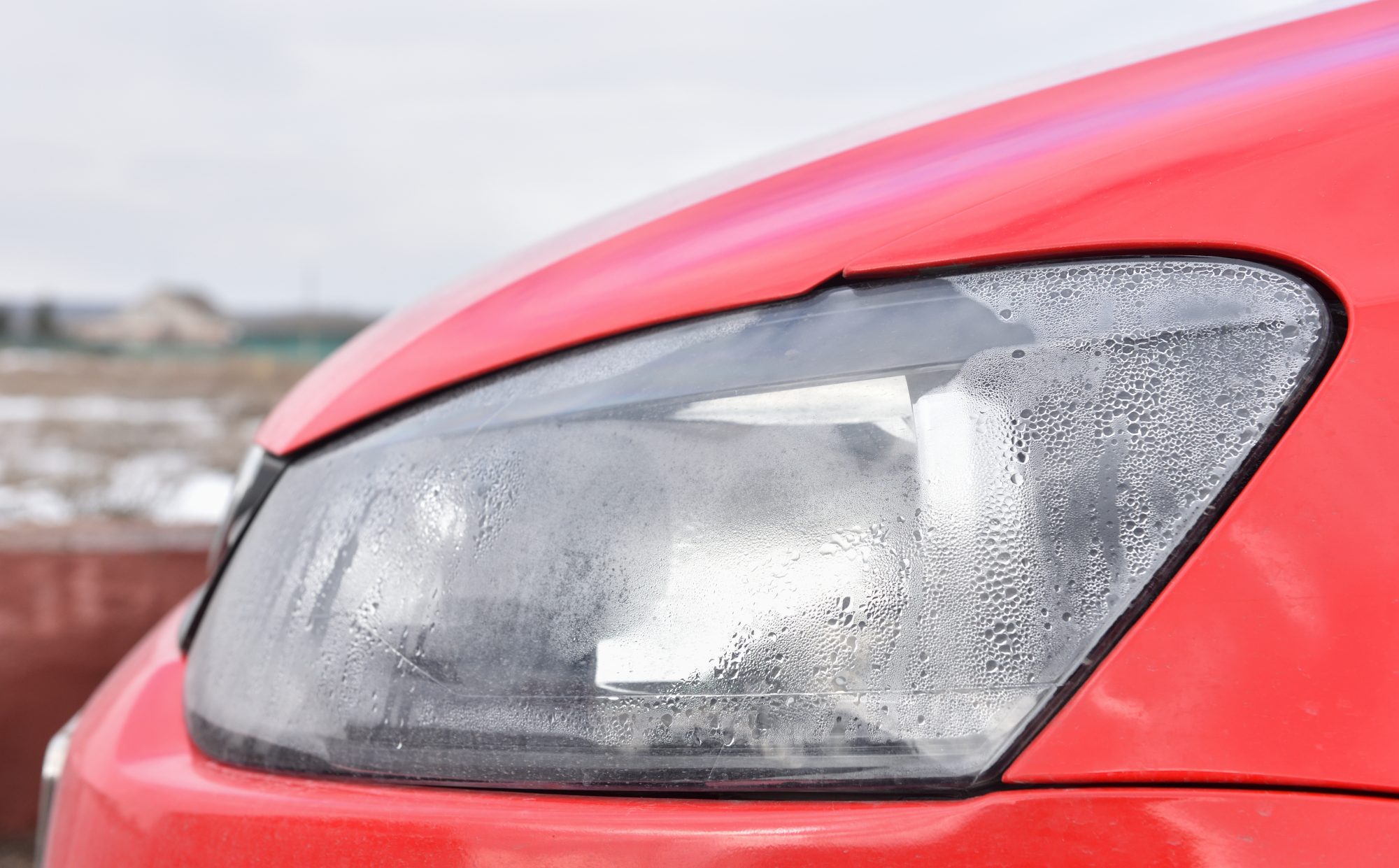Why do my headlights have condensation?
- Headlight condensation is more common in colder months, caused by seal issues, vent blockages, or damage.
- Excessive condensation can lead to an MOT failure due to visibility concerns.
- Remedies include checking seals, clearing vents, and avoiding bulb removal.
- Mr Tyre provides expert advice and vehicle repairs in Central England.

The weather is cooling and you’ve noticed moisture collecting in your headlights.
But what’s causing it?
In this article, we’ll take you through the main culprits for condensation in headlights along with the effect this problem can have on your MOT success, and how to resolve it.
What causes headlight condensation?
Headlights tend to build up with condensation when they are exposed to a higher level of moisture than usual and when the exterior is colder than the interior of the lamp. That’s why you might notice the problem more in autumn and winter.
To keep your headlamps free of condensation, the light’s ventilation system (if you look closely you should see small holes in the glass) should allow any moisture to be expelled and will moderate the temperature difference.
But when this doesn’t appear to be happening, there are a few key contributors that could be causing misty headlights and condensation build-up.
Let’s explore the main players below:
- Ineffective seal: Seals are designed to keep out moisture, so any damage can result in water working its way in.
- Vent problems: The headlamp vent is there to regulate air pressure within the headlamp, and so vent blockages can impede this process.
- Damage to headlight: Any cracks or damage can allow in excess moisture, exacerbating the problem.
Now you understand a little more about the problems, you might be wondering if these are enough to fail an MOT.
Will headlight condensation fail my MOT?
Water on headlights will result in an MOT failure if it affects the beam pattern, as it can negatively impact your visibility – and therefore your safety – on the road. Only the tester can give an accurate answer as to whether your condensation issue is severe enough to fail an MOT.
That said, small amounts of condensation should not affect the outcome of your MOT. However, it is advised to get to the root of the issue to prevent it from worsening in the future.
How to get rid of headlight condensation
So, what can you do about it?
- First, try parking the car in a warm spot and seeing if the moisture clears up by itself. If the headlights remain clouded by condensation, there is something stopping the water from evaporating fully.
- Check the lamp and seals for damage as these may need to be resealed or fixed. Also, make sure that the lights’ vents are not blocked up or dirty. If they are, carefully wipe away the grime or budge any debris with compressed air
- While you are performing these checks, it’s not recommended to remove the headlight bulb(s), as putting them back incorrectly can affect their placement and therefore, their effectiveness.
If you have tried all of this or simply don’t feel confident diagnosing and correcting the issue yourself, we strongly recommend getting a professional eye to assess the situation. This way, your car will be properly taken care of and rectified without impacting headlight positioning or function.
Here at Mr Tyre, we’re the leading chain of autocentres for Central England. Whatever your car query, we’re here to provide friendly advice and competitive rates on vehicle repairs to get your car back on the road. Simply get in touch to chat.


